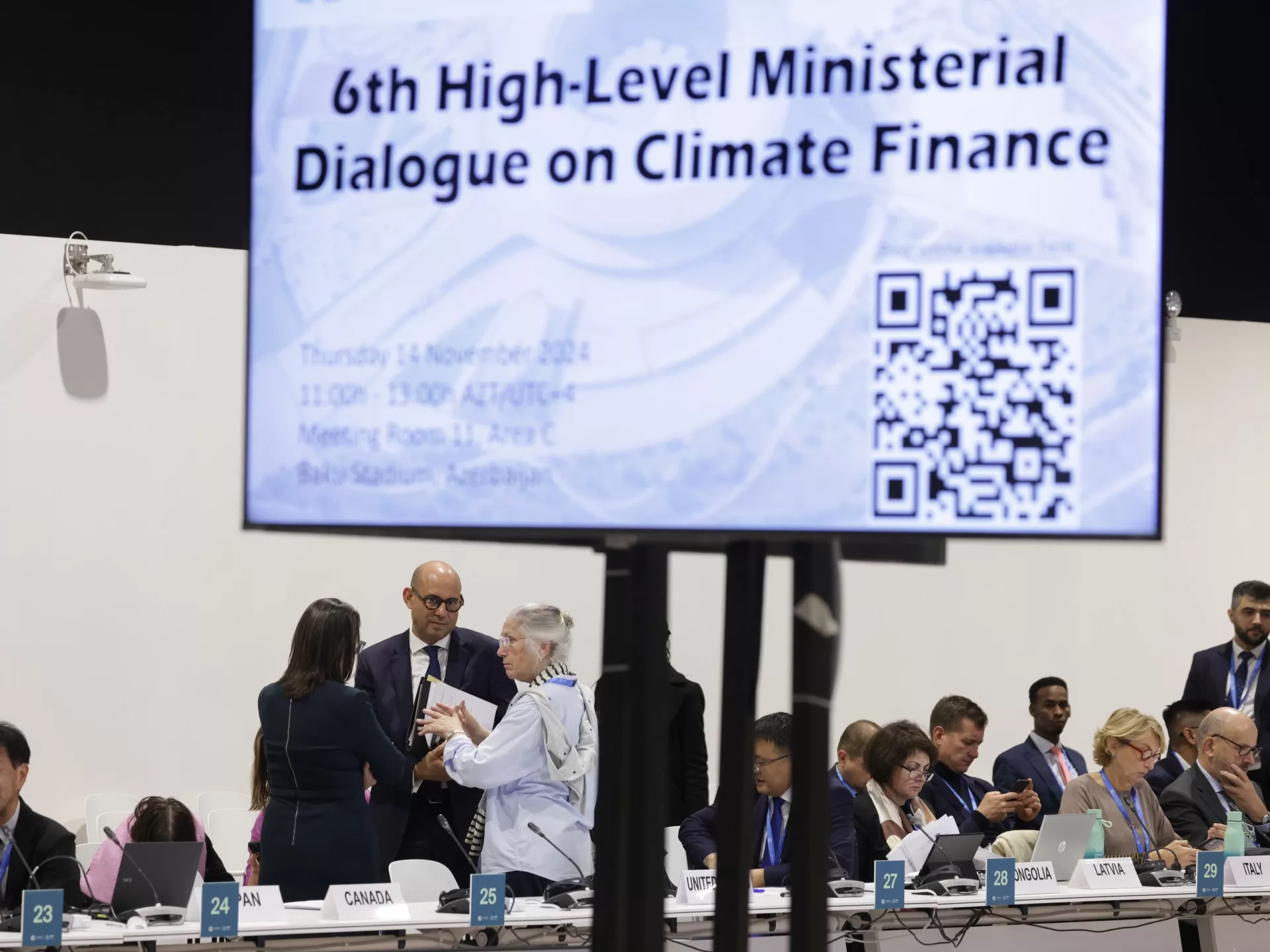The flash floods that overwhelmed Spain’s eastern Valencia region two weeks ago were the deadliest natural disaster in the country’s living memory.
The Spanish government responded to the tragedy with the largest peacetime mobilisation of the military and police in the country’s recent history, but it was still heavily criticised for the delays in the delivery of emergency assistance to certain areas, and its perceived lack of preparedness for such a catastrophe.
The disaster in Spain, which killed more than 200 people and left countless homes and businesses submerged in mud, is a stark reminder that the toll of climate change is escalating, with more frequent and intense extreme weather events, and with more people and places being affected. When a developed country like Spain appears to be struggling to cope, what chance do developing countries have in the face of the catastrophes looming on the horizon?
This week, more than one hundred world leaders have convened in Baku, Azerbaijan for another round of UN climate negotiations: the COP29. At the top of the agenda is a new climate finance deal.
At the 2009 Copenhagen Climate Summit, developed countries agreed that, by 2020, they would begin to collectively mobilise $100bn per year to support climate action in developing countries. This goal was finally met in 2022, two years after the deadline. Since then, countries have been working to secure a new, much more ambitious deal, dubbed New Collective Quantified Goal (NCQG), to replace the old one. The hope is that the new deal will significantly raise the promised yearly contributions above the floor of $100bn – which is largely insufficient, and close the growing gaps in the climate finance framework.
Predictions for the amount of funds required to address the climate change-related needs of developing nations are now in the region of trillions of dollars. United Nations Framework Convention on Climate Change (UNFCCC), for example, estimates that developing countries will need between $5.8 to $5.9 trillion by 2030 at a minimum to address their climate needs. This means, that if developing nations are to have any chance of building clean-energy systems, preparing for extreme weather events and responding effectively to natural disasters like the one in Spain, it is crucial that a new, much more comprehensive climate finance deal is reached – and quickly.
As such, there are several “billion dollar questions” under debate this week in Baku: Where should the money to the NCQG come from, and how much? What types of finance should feed into it? What it should fund and where?
The negotiations for the NCQG have been under way for more than two years, but there is still no consensus among nations on these crucial questions.
Developing countries and civil society groups have already put forward concrete proposals about what NCQG should look like and involve, yet wealthier nations remain silent. The developed world’s lack of action on securing a new climate finance deal undermines trust and even risks unravelling the Paris Agreement.
Developed nations appear to be making two grave mistakes around NCQG negotiations that could have serious consequences for our collective future.
First, they seem to be holding negotiations hostage to pressure more countries – especially relatively wealthy emerging economies, such as China – to contribute to reducing their individual burden. This is nothing but a delaying tactic that breaches good faith. Not only are many developing nations already contributing to the best of their ability, but expanding the deal to include more of them as contributors is firmly outside the scope of the negotiations.
Second, developed countries appear to prefer that most of the contributions to the NCQG come from the private sector and debt-based financing. But the private sector has neither the motive nor the ability to effectively take the lead in this effort. Many climate needs that require finance for their delivery are not profitable, especially those linked to adaptation and loss and damage. So far, attempts to make such projects bankable, through climate finance or de-risking activities, have proven to be woefully inadequate.
Economist Daniela Gabor has termed this flawed approach – which leverages public finances to safeguard private profits, while shifting the risks to taxpayers and vulnerable nations – as the “the Wall Street Climate Consensus”.
By allowing financiers and international financial institutions, including multilateral development banks, to decide how climate finance is created and who benefits from it, developed countries are undermining the principles of climate justice. This approach results in the poorest people in the poorest countries shouldering the heaviest burden.
Anything less than genuine, grant-based financial support at scale will undermine the Paris Agreement and set back progress for years to come.
According to UNCTAD, some 3.3 billion people currently live in countries that are spending more money servicing their debts than funding healthcare and education. The new climate finance goal must not worsen this debt crisis.
Under the current arrangement, most of the climate finance payments of less than $100bn are being made in the form of loans, including at market rate. This mistake cannot be repeated under NCQG. The new finance goal must be a vehicle to rebuild trust in the multilateral system and ensure the ambition needed to fund the nationally determined contributions (NDCs) that will be agreed upon at the COP30 in Brazil.
The responsibility of developed countries is clear. They must step up and fund climate action that prioritises the wellbeing of people over profits. The world is watching Baku closely, and history will judge harshly if the most powerful nations choose to abandon those on the front lines of climate catastrophe.
The views expressed in this article are the author’s own and do not necessarily reflect Al Jazeera’s editorial stance.
